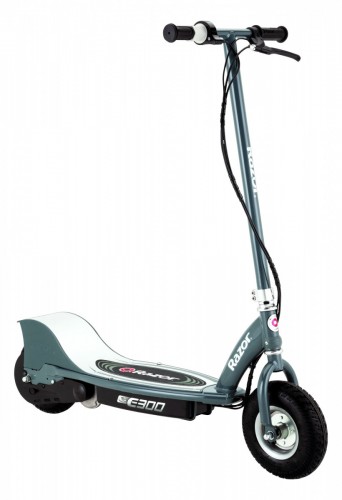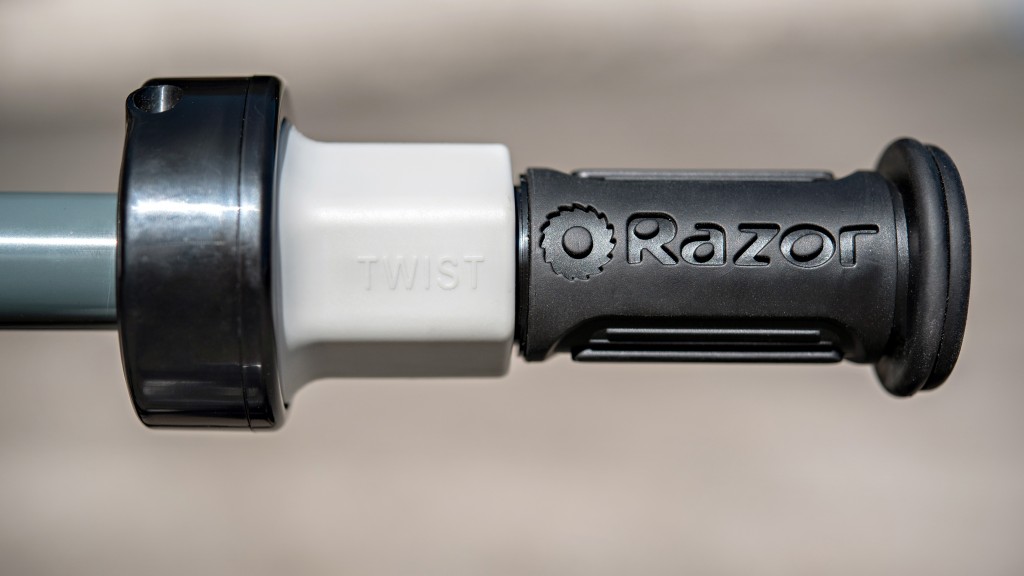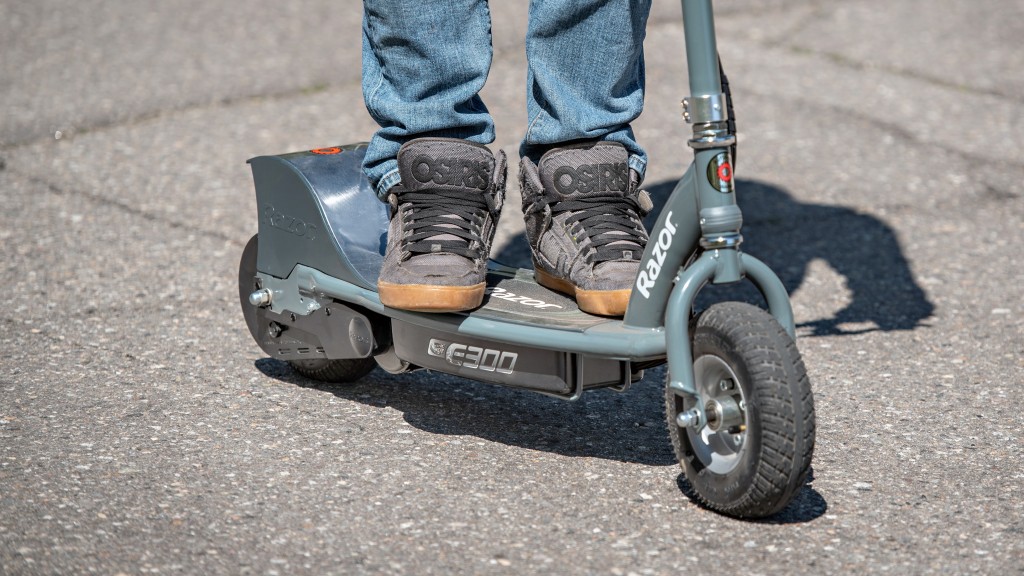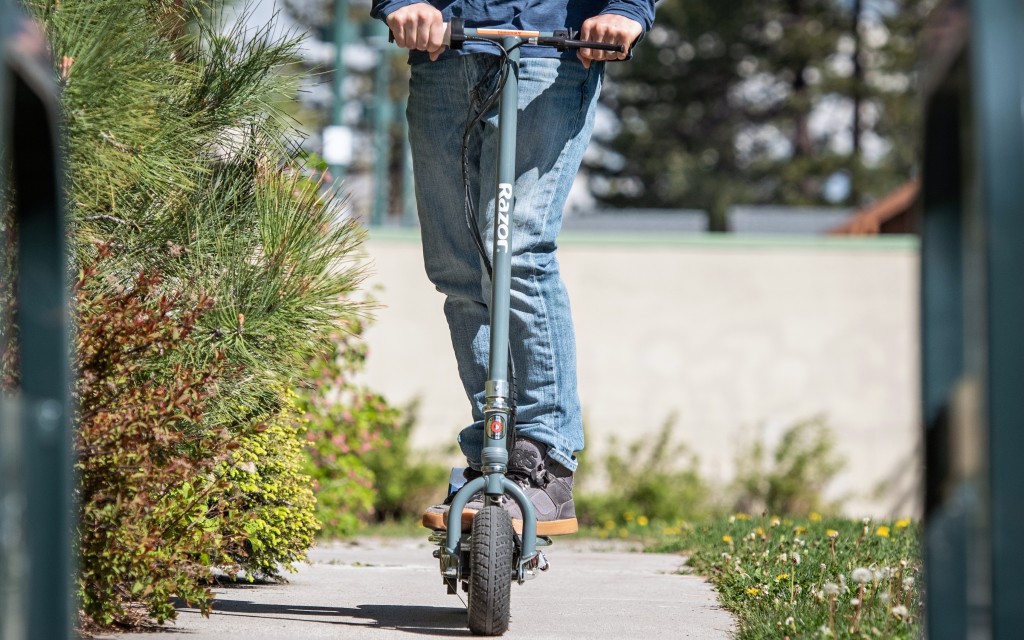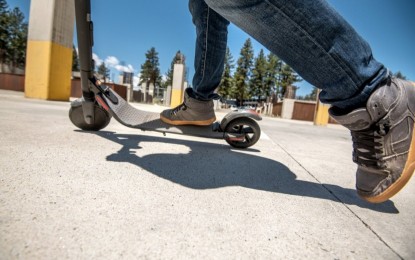Razor E300 Review
Our Verdict
Compare to Similar Products
 This Product
Razor E300 | |||||
|---|---|---|---|---|---|
| Awards | |||||
| Price | $360 List $345.28 at Amazon | $549 List $549.00 at Amazon | $400 List $269.99 at Amazon | $400 List $299.99 at Amazon | $299 List $299.99 at Amazon |
Overall Score  |
|||||
| Star Rating | |||||
| Bottom Line | Despite the modest price, this scooter's performance — or lack thereof — in our testing regiment left reviewers with little positive to relay | A powerful scooter with excellent range and a smooth ride | A decent scooter with a handy app-based locking feature, a fussy carrying handle, and questionable build quality | An affordable option for shorter commutes on flatter and smoother terrain | A smooth-riding, wallet-friendly scooter with some high-end features |
| Rating Categories | Razor E300 | Gotrax G4 | Superfun S1-A | Segway Ninebot E2 Plus | Gotrax GXL V2 |
| Range (25%) | |||||
| Power (25%) | |||||
| Ride Comfort (20%) | |||||
| Portability (15%) | |||||
| Braking (15%) | |||||
| Specs | Razor E300 | Gotrax G4 | Superfun S1-A | Segway Ninebot E2 Plus | Gotrax GXL V2 |
| Measured Maximum Speed | 12.0 mph | 19.8 mph | 15.7 mph | 15.6 mph | 12.5 mph |
| Measured Effective Range | 4.7 miles | 22 miles | 14.7 miles | 10.9 miles | 7 miles |
| Measured Charge Time | 6 hours 20 minutes | 5 hours 50 minutes | 5 hours 20 minutes | 7 hours | 4 hours 15 minutes |
| Brake Type | Rear disc | Rear disc brake and E-ABS braking system | Front electronic ABS brake with a rear disc brake | Electronic front brake with rear drum brake | Front regen Rear disc |
| Tire Type | Pneumatic | Pneumatic | Solid (honeycomb) | Inner hollow, maintenance-free | Pneumatic |
| Tire Size | 9" | 10" | 8.5" | 8.1" | 8.5" |
| Lights | No | Yes | Yes | Yes | Yes |
| Screen | No | Yes | Yes | Yes | Yes |
| App | No | No | Yes | Yes | No |
| Maximum Load | 220 lbs | 220 lbs | 220 lbs | 198 lbs | 220 lbs |
| Bell | No | Yes | Yes | Yes | Yes |
| Measured Weight | 42.5 lbs | 37.8 lbs | 31.6 lbs | 33.3 lbs | 26 lbs |
| Battery Type | Sealed lead acid | Lithium | Lithium-ion | Lithium-ion | Lithium |
| Motor | 250 Watt | 350 Watt | 450 Watt | Nominal 300 Watt Max 500 Watt |
250 Watt |
Our Analysis and Test Results
This electric scooter has several features that are unique in the class. First, it uses a sealed lead acid battery which is interesting considering that lithium-ion batteries have become the standard. The E300 also uses a chain-driven motor to transfer power to the rear wheel, meaning that there is no electronic hub brake. Finally, the frame and fork are constructed of steel. Given the design and the target consumer (primarily children), it's no wonder that this product failed to meet the standards set by the other scooters here reviewed. It also didn't help that our E300 broke during testing and had to be returned.
Performance Comparison
Power
This metric is a measure of hill-climbing ability and maximum speed in the flats. To assess the prior, we picked two hills (3.5% and 10.5% grade) and ran the scooter up them - if they could. On the shallower of the two, the E300's max speed was reduced by 5-7 mph. However, one tester noted that he was skeptical that the scooter would have continued were the hill any longer. The steeper grade was not attempted for fear of breaking the product before further tests could be completed. (note: the E300 eventually did break during testing).
To assess speed we took the Razor out with a fully charged battery and cranked the throttle taking it to its maximum cruising speed and timed how long it took to go 100 feet. This trial was run three times and the results were averaged. At 11.95 mph, the E300 is at the bottom of the class.
Ride
This metric is simply an assessment of how aware our testers were of rough road surfaces and unexpected cracks. This was one of the categories in which the E300 excelled; mainly due to its 9" pneumatic tires.
Braking
To get a grasp on a scooter's braking power we looked at two critical conditions; namely, hill braking and flat ground stopping. The first is an evaluation of the machine's ability to regulate speed when descending a steep hill. The second evaluates the stopping distance on flat ground. Despite having only one (disc) brake, the Razor did quite well in both of these tests. However, the lack of redundancy in the brake system raises safety concerns.
Range
The range metric is an evaluation of travel radius and battery charging time. When we started testing for range we quickly realized that we needed to subdivide travel radius into two parts to accurately describe the performance of the scooters being tested. The first part is the effective range, which is the number of miles traversed at full speed on flat ground. The second part is the maximum range, which is the distance the scooter will go at any speed. Here the E300 shows the problematic nature of its sealed lead acid battery. There is a big gap between the maximum miles (5.9) and the effective miles (4.7) delivered on a charge, and both were well below those delivered by the lithium-ion counterparts. Additionally, the battery was slow to charge taking about 6 ½ hours. The manufacturer notes in the manual that it can take up to 24 hours to fully charge.
Portability
The Razor's lack of a folding mechanism for the steering column, its heavy steel frame construction, and its generally bulky design suggest that its designers did not have portability in mind. As such, the scooter received the lowest marks in the class in this category.
Value
Given the general lack of performance delivered, and that our E300 broke within a few days of purchase. We can not say that this product is a good value.
Conclusion
We would recommend that a potential consumer look elsewhere for an electric scooter. Even if you're looking to pick up one of these machines for the kids to play around on in the driveway, there are better options at the price.


